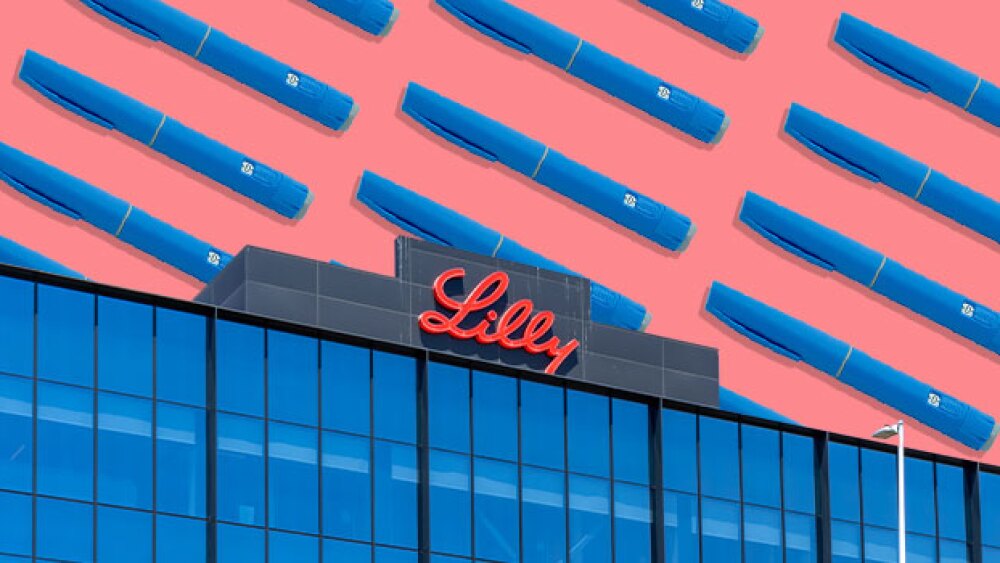Some analysts say so, and a recent study suggested Lilly’s tirzepatide beat Novo’s semaglutide at inducing weight loss, but there are other factors in the market race.
With a more than two-year lead in the lucrative weight-loss drug market, Novo Nordisk jumped out ahead of rival Eli Lilly to dominate the space. But some analysts predict that Lilly will ultimately become the market leader in the GLP-1 space as momentum continues to build.
Last week, an observational study in JAMA Internal Medicine suggested that Lilly’s tirzepatide elicited greater weight loss than Novo’s semaglutide in obese or overweight adults. While head-to-head studies comparing the drugs are still needed to confirm that efficacy finding, the results bode well for Lilly.
“I’ve known tirzepatide is better than semaglutide,” said Evan Seigerman, a managing director and senior research analyst at the Bank of Montreal. “It’s a stronger drug; you lose more weight on Zepbound. I don’t think that’s a shocker.”
Louise Chen, managing director at Cantor Fitzgerald, agreed that the data for Lilly’s Zepbound “has looked better” than that of Novo’s Wegovy in clinical trials.
Seigerman said that this efficacy advantage is a big reason he believes Lilly will soon pass Novo in this space. He predicts that sales of Wegovy will continue to outpace Zepbound for another two years, but said that by 2027 he expects Lilly will have the edge.
Wegovy was approved for chronic weight management in 2021 and has been a dominant force in the lucrative market, which is poised to reach $100 billion by 2030. However, Zepbound, which the FDA green lighted in November 2023, has rocketed onto the market to challenge Wegovy with blockbuster sales.
At the time of its approval, Guggenheim Securities analyst Seamus Fernandez predicted Zepbound has a “very strong shot of being the biggest drug of all time.” According to Seigerman, it will gain ground quickly. This year, he forecasted, Wegovy sales in the U.S. will be around $8.7 billion, while Zepbound will bring in around $3.7 billion in revenue. Next year, he said, Wegovy will bring in $14 billion while Zepbound sales total $12 billion.
Chen noted that a majority of doctors have seemed to favor Zepbound. If it were a level playing field, at the same price and with the same supply, then Zepbound would win out, Chen told BioSpace. Indeed, prescriptions of Zepbound outpaced Wegovy for the first time in the first quarter of 2024, according to Reuters, a trend that is expected to continue.
Supply Constraints, Coverage and Pricing
A complicating factor in the two-horse race between Lilly and Novo is the supply and demand for their respective drugs. In April 2024, the FDA’s drug shortage database noted that Zepbound will be limited in availability in the U.S. through the second quarter of 2024. Meanwhile, Wegovy is also in short supply, with the American Society of Health-System Pharmacists recording a shortage of several dosage amounts due to demand outpacing supply.
Seigerman said there has been “unprecedented demand” for the GLP-1 products. “I’ve been covering pharmaceuticals for 11 years and in the industry for about 14 years. I’ve never seen demand for a product like this,” he said.
Both Lilly and Novo are working on increasing their manufacturing efforts to improve the supply of these products. Lilly plans to develop facilities in the U.S. and Europe, while Novo will acquire facilities from contract manufacturer Catalent to produce GLP-1s. The Novo Catalent deal is expected to close toward the end of 2024. “They are investing heavily, which is very important,” Seigerman said. Overall, he said that the supply issue is a little better for Zepbound.
In addition to supply, Chen pointed to how payers reimburse as a factor in whether Zepbound will take market share away from Wegovy. With these popular weight-loss drugs being studied for a range of other diseases, positive trial results could prompt more insurers to cover them. Indeed, both companies are looking to add to their drugs’ labels indications such as heart failure, kidney disease, nonalcoholic steatohepatitis and sleep apnea, future approvals that could bolster their market share.
“A lot of these populations are socioeconomically disadvantaged, so having one solution for four or five [health] problems is a huge deal,” Chen said.
Another major factor is drug pricing. In May 2024, CFO Karsten Munk Knudsen told analysts in a first-quarter earnings call that “given increasing volume and competition, net pricing like-for-like will be down in the U.S.” He added that the downward trend for Wegovy’s price is expected to continue through the rest of 2024.
Knudsen told Bloomberg that price pressure “is more intense than what we expected” and “as the market matures and volumes ramp up and competition enters the market, it’s natural that prices would be coming down—and that’s what we’ve seen in the first quarter and also what we expect for the full year.”
Seigerman said that Novo is “trying to make sure they’re competitive” with Zepbound on pricing.






